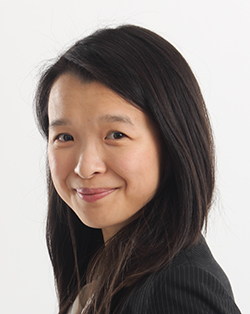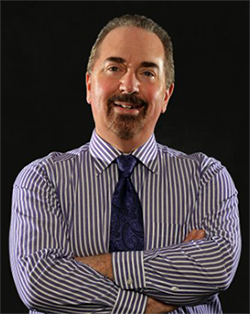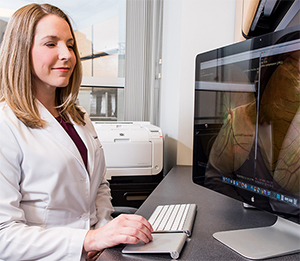What are some of the best ways to keep your practice running smoothly and free of the bottlenecks that can drag down your schedule? We talked to physicians and administrators in two types of glaucoma practices — a private group and an academic hospital clinic. Find out below how they stay efficient and how you can incorporate their tips into your own practice.
Practice Flow in a Multispecialty Group Practice
Wellish Vision Institute in Las Vegas is a multispecialty group with three ophthalmologists and three optometrists who share their time between two locations and 50 staff members. We talked to glaucoma specialist Aiyin Chen, MD, four years in the practice, and practice administrator Tony Sterrett, who’s been with the practice for just over a year.

Dr. Chen.
What is your practice’s patient volume?
Dr. Chen: I see on average 45 to 50 patients a day. As a whole, our practice sees about 2,000 patients a month and performs about 300 procedures during that time.
How does your practice handle high patient volume in a time-efficient manner?
Dr. Chen: We do that in several ways. We designed the schedule template in a way that allows patients to “flow” continuously, mixing longer appointments (new patients, for example) with shorter appointments (established post-op patients). These templates are tuned to each doctor’s specific throughput.
We also build in “special testing days” each week. These slots are designed for longer tests such as cataract pre-op testing, visual fields or two or more combined tests. We do this so that all tests are completed prior to a patient’s appointment. As a result, patients won't have a long clinic visit and tests won’t slow down the clinic flow.
Sterrett: We also mail customized videos to our patients based on their appointment reason. That way, when the patient arrives to meet the doctor, they already have a basic understanding of the treatment options. Our counseling team then uses easy-to-understand handouts that allow our patients to choose the best option for their care.
Dr. Chen: And of course it’s very important that I, as the physician, be on time and come prepared. My scribes and I review the schedule the day before and print it out daily to stay on track. When there is an unscheduled break, we walk around the clinic to see if anyone else is getting bogged down and needs help. A little bit of caffeine also goes a long way!

Mr. Sterrett.
Do you have any solutions for making the finances work and minimizing overhead?
Sterrett: Like every practice, we have to be creative and watch our payroll — but this doesn’t necessarily mean cutting staff. For example, we realized that our doctors could be more efficient by having additional support, so we recently added a second scribe to each doctor’s team. This enabled our doctors to add slots to their schedule, which increased overall production. It took a leap of faith, but the decision increased our capacity, which more than covered the payroll cost.
We also cross-train our staff so that when we need help in a different department, we can shuffle team members to facilitate coverage. For instance, it’s not uncommon to see someone from the front desk covering an opening in our call center, or vice versa.
How do scribes, techs and surgery schedulers fit into your practice?
Dr. Chen: Each of our doctors has two scribes and a team of technicians who are familiar with the preferences and flow of each physician. Designated staff members perform specific tests like visual fields and OCT, but all of our techs can perform any of these tests if needed. On particularly busy days, we have an additional “float” person who can tech patients, perform tests and even scribe, depending on which team is bogged down.
We also employ dedicated surgery staff and schedulers. We typically schedule the patients in the exam room, and the scribes handle all of the in-office procedures. However, our practice performs 75 surgeries a week, so we need a few dedicated staff to perform pre-op counseling, handle cancellations and ensure that all the appropriate testing and paperwork are in place.
How do you get things back on track when practice flow slows down?
Dr. Chen: It’s a team approach. First, the front desk will communicate with patients that the clinic is behind schedule and let them know an approximate wait time. We also defer certain tests if patients are okay with coming back on one of our “special testing days.” In addition, techs might help take a quick photo or OCT if the tester is held up doing a time-consuming visual field. At the same time, scribes may help out checking vision and IOP.
Sterrett: We also assign a member of management to each clinic to direct traffic. This keeps staff in their high-payoff activities and reduces waste. The managers are then able to reassign the technical staff in real time, which results in improved clinic flow. Of course, we still have days when we run behind, but with close supervision, we can respond quicker to problems and get things back on track.
Dr. Chen: And it’s always helpful to remember that we can be as prepared and efficient as possible, but if there are several complex patients with, say, sky-high IOP or who require urgent surgery, the clinic will be running late. I’ve learned to not let that affect me and stay appreciative of the staff — no matter what happens!
Practice Flow in a Large Academic Institution
For a different perspective, we talked to glaucoma specialist Lindsay A. Rhodes, MD. A YO in her fourth year of practice, she discussed practice flow at the Callahan Eye Hospital Clinic, which has about 20 clinical faculty members who see patients. This large academic institution is affiliated with the University of Alabama at Birmingham Hospital.

Dr. Rhodes.
What is your practice’s patient volume?
Dr. Rhodes: Our practice sees about 400 to 500 patients per day across several different locations. I see about 40 to 50 patients a day in my own clinic.
What makes an academic institution unique in terms of patient flow?
Dr. Rhodes: The biggest difference from a private practice in terms of patient flow is that medical students, residents and fellows often work alongside me in clinic. So I have to balance my time between teaching about the patient and interacting with the patient. And depending on the trainee’s knowledge base and experience level, I have to tailor the amount of detail that I teach when it comes to a particular treatment or exam technique. This can all affect my efficiency in clinic.
Also, our academic institution is rather unique: Each individual physician determines how busy of a clinic they want relative to their other teaching and research demands. So, some of our faculty might end up seeing more patients than a private practice, while others who have more complex patients and fellows to train might see fewer.
How does your practice handle high patient volume in a time-efficient manner?
Dr. Rhodes: Each physician sets the number of patients she or he feels comfortable with. We’ve also started using a vertically integrated system in which several optometrists in our practice will see, for example, low-acuity patients, while the subspecialists will focus on the advanced surgical cases. Additionally, we have fellows in several of the subspecialties, which is a tremendous support in dealing with a high-volume workload.
As a glaucoma specialist, it’s very helpful to have my patients’ optic nerve imaging completed prior to the actual exam. This makes it easier for me to evaluate their information all at once and formulate a comprehensive treatment plan.
In addition, I’ve found it useful to work out of two rooms once our technicians have worked up the bulk of the patients. The techs can load the next patient in the open exam room and I can bounce back and forth between rooms, with my scribe documenting everything behind me.
How does your practice handle ancillary studies such as imaging?
Dr. Rhodes: Our practice does not have a set method for this — it’s mostly physician dependent. In our busy glaucoma clinic, we have dedicated technicians who perform the imaging. Our satellite clinic, however, is more of a comprehensive clinic, so each technician works up the patient and then takes the ordered images.
How do scribes and surgery schedulers fit into your practice?
Dr. Rhodes: We converted to an electronic health record system a year ago and implemented a scribe system at the same time. This has been wonderful! I have the same scribe with me at all times so she learns exactly how to document what I am saying. As a result, I have very little interaction with the actual EHR program, which is a major time-saver.
I also have a dedicated surgery scheduler who works with three different surgeons. She’s learned exactly how we all like our respective surgeries to be scheduled. And she talks with the patients and goes over all of the small details about the procedures so that we don’t have to.
* * *
About the author: Mike Mott is a former assistant editor for EyeNet Magazine and contributing writer for YO Info.